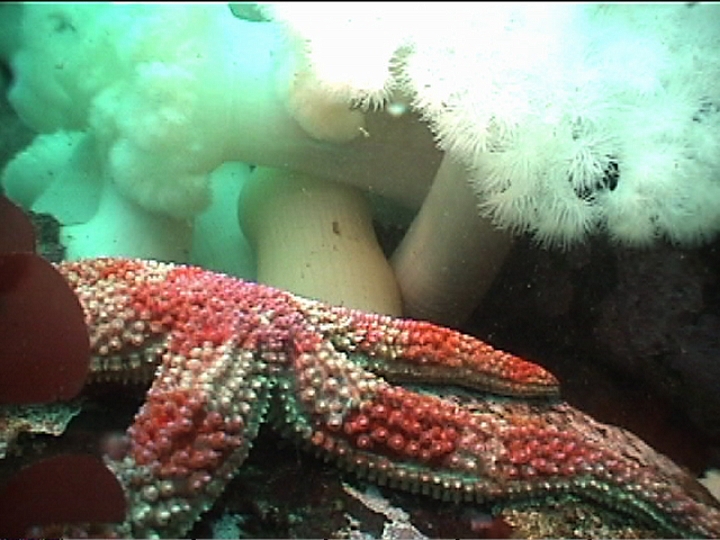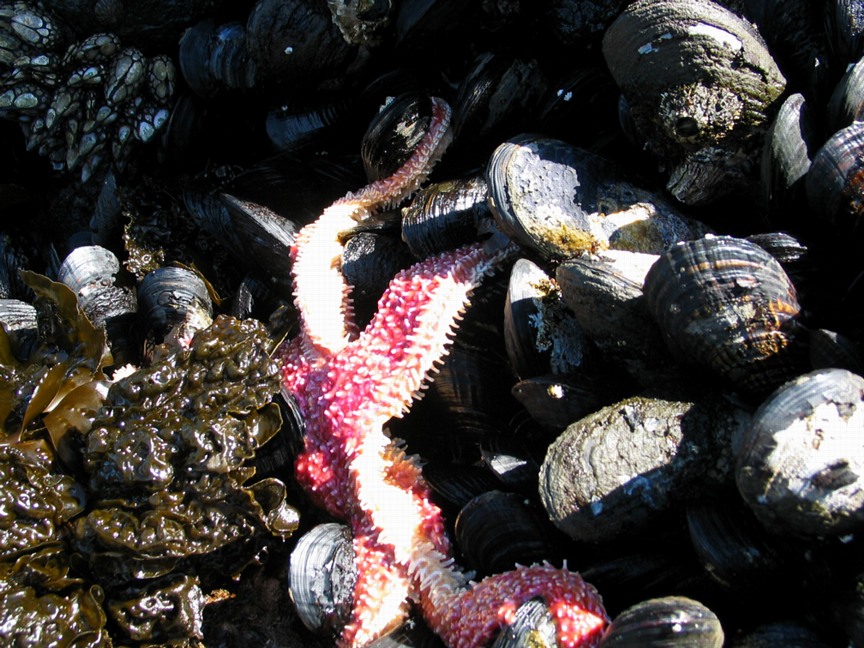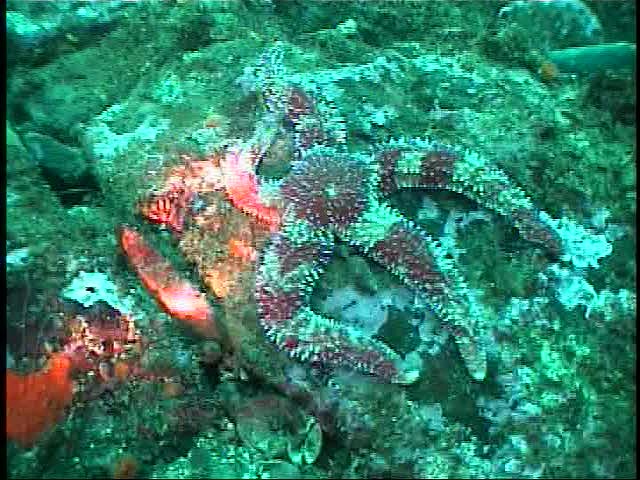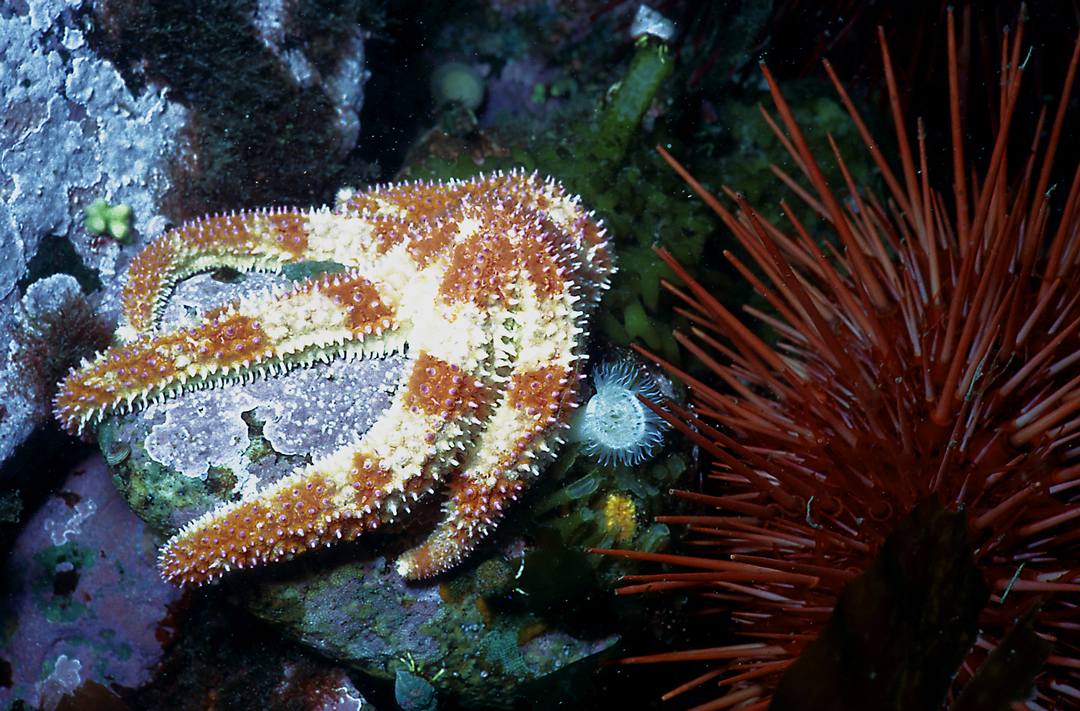- This painted star was exposed at low tide in the mussel bed
- Underwater, the color appears dull until illuminated
- this photo by Dr. A.Svoboda
- this photo by Dr. A.Svoboda
| General description:
Arms radius to 21cm, gets fairly big to 50cm; disk small, with five slender arms; aboral surface bearing prominent sharp spines and a conspicuous ruff of pedicellariae, which are white; color vivid; varying from rosy pink with a gray mottling, to bright red mottled or banded with yellow, the spines whitish or lilac. Habitat Uncommon, on mud, sand, and kelp but occurs in the very low intertidal zone, on shaded rock surfaces. It is more common at scuba depths and extends to 250m, being found from Alaska to Southern California. Feeding Orthasterias koehleri feed on small snails, limpets, clams, scallops, chiton, barnacles, and tunicates. They can dig clams out of cobbled bottoms, and use the pull of the tube feet to spread apart the outer layer of a clam shell until a small opening is made between the valves. The stomach is then inserted through the opening and the clam digested. Reproduction To expose the gonads in a rainbow sea star, make a 1-2 inch cut in the ray near the junction with the disk, push the digestive gland gently aside to expose the underlying gonad, then firmly grasp the gonoduct with forceps and cut it free from the gonopore. Fragments of gonad can be removed, but the cut gonad will leak gametes into the body cavity. Suture the incision or leave it to heal unsutured in clean and strongly flowing seas water. Recovery is better if the insicion is small, the digestive gland is undamaged, and all air is removed from the body cavity. This method has been used with success. References Intertidal Invertebrates of California, Between Pacific Tides |
| Other Members of the Phylum Echinodermata at Race Rocks |
and Image File |
 The Race Rocks taxonomy is a collaborative venture originally started with the Biology and Environmental Systems students of Lester Pearson College UWC. It now also has contributions added by Faculty, Staff, Volunteers and Observers on the remote control webcams. The Race Rocks taxonomy is a collaborative venture originally started with the Biology and Environmental Systems students of Lester Pearson College UWC. It now also has contributions added by Faculty, Staff, Volunteers and Observers on the remote control webcams.
Esrah Ugurlu (PC year 28 |





